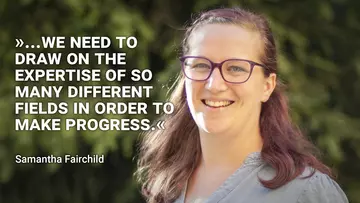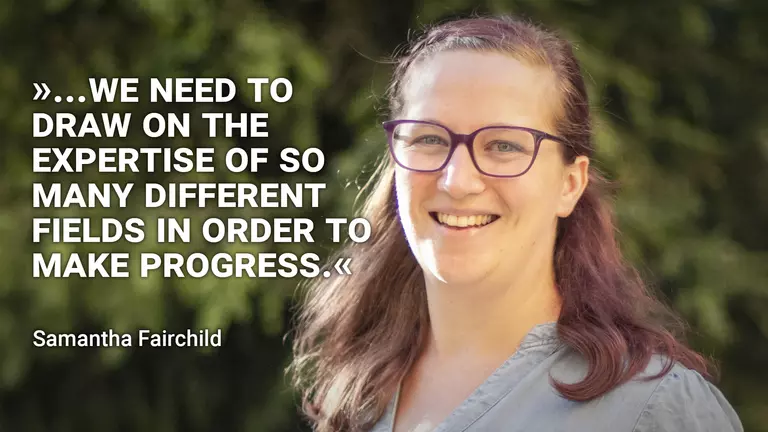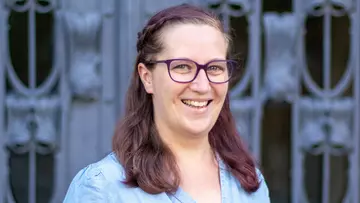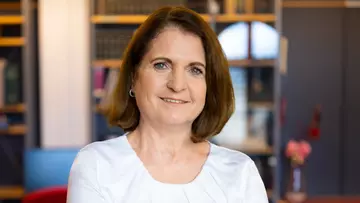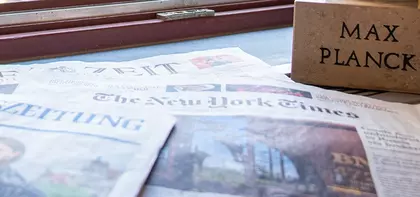
Samantha Fairchild Establishes New Research Group to Cross the Transcendental Divide
Published 15.09.2023
MiS is pleased to welcome an exciting new research group under the leadership of Samantha Fairchild. Formerly a postdoc under Paul Breiding, Samantha has now started her own group called Discrete Sets in Geometry.
The group will study discrete sets arising from geometric objects such as Riemann surfaces. This will involve the use of techniques from both dynamical systems and number theory to analyze the properties of these sets. An important theme of their approach is crossing the “transcendental divide”, which entails utilizing transcendental functions to directly relate Riemann surfaces and algebraic curves.
To learn more about her research and how the categorization of plants provides an insightful analogy to the characterization of mathematical objects, please read our interview with Samantha.
With several ambitious goals on the horizon, Samantha is keen to bring on postdocs who are eager to collaborate across mathematical disciplines. We are excited to see what her group can discover at the crossroads of geometry, number theory, and beyond.
Interview
MiS:
You mentioned that your research involves both number theory and dynamics. How do these two areas intersect in the context of your research, and what unique insights do they bring to the field?
Samantha Fairchild:
As mathematicians, we take an object like a translation surface, then put all the objects in a bag and shake things around to see what patterns we can find by looking at all the objects together instead of individually. This is similar, for example, to looking at plants. By considering all plants together, we can start sorting them into different categories, such as succulents, herbs, and flowers, by identifying varying common characteristics. The dynamical systems aspect of the research means we take one object out of the bag and then pick a way of selecting future objects that allow us to detect how different objects are connected. Back to the plant example, I will start with my basil plant and then only select other plants that are also edible. Now I look at this class of plants I selected and start looking for finer information, for example, what differentiates herbs from kohlrabi? This finer information is where number theory comes in. Specifically, when I take a translation surface, and under my dynamical system only end up selecting a small family of surfaces with the same characteristic (which is their stabilizer under the dynamical system). I can use number theory associated to the stabilizer to detect what makes this grouping of surfaces so special.
Crossing the Transcendental Divide sounds fascinating. Could you elaborate on what that means and how using transcendental functions bridges the gap between Riemann surfaces and Algebraic Curves?
As a bag of objects, Riemann surfaces and Algebraic curves are identical, which means for every Riemann surface there is some algebraic curve which is identical to it. The difficulty comes in selecting one Riemann surface and rummaging through a very large bag to find the algebraic curve that is identical to the Riemann surface. In order to find the matching algebraic curve, the classical theory of Riemann, Poincaré, and other famous mathematicians knew that if they wrote a bunch of transcendental functions, that is, functions that you have to use infinitely many terms to write down, then you can determine the algebraic curve. This is all good, but in practice, the fact that we need infinitely many terms makes it very difficult to use computers to help us out in trying to find the right algebraic curve. This is exactly the heart of the transcendental divide: we have a formula to find the algebraic curve, and we need to find smart ways to implement this formula in practice using finite information.
In what ways could you see the methodologies developed in your research being applied to real-world data science?
My interest in data science is relatively new, and I look forward to discussing further with real-world data scientists what kind of connections we can make between my research. At the heart of all of my work is using information to understand the shape and geometry of different surfaces. Making this a finite instead of infinite problem allows us to tell computers how to distinguish between two Riemann surfaces. This would hopefully give information to contribute to categorical machine learning, where we need to help computers determine if two objects are the same. As an example of categorical machine learning, every time we have to do a CAPTCHA by selecting all images containing a part of a bicycle, the security comes from the fact that robots are not as good yet as the human eye at detecting when an object is the same or different. This is the most basic idea behind machine learning, where we want to give the computer some information or algorithm to be able to accurately sort images between those containing bicycles and those not containing a bicycle.
What are some of the challenges or open questions that your group aims to address in the near future?
As mentioned, the transcendental divide is a very large open question. Our near-future goals include looking at specific families of Riemann surfaces and using these as test cases to implement both theoretical work and computational work in detecting or narrowing down possible algebraic curves for these families. For example, using symmetries to help with theoretical work and using learning algorithms to computationally give conjectures of the correct algebraic curve. The other main focus of my group's research is understanding closed or periodic trajectories on translation surfaces, which involves most of the dynamics for some large-scale behavior, and number theory to detect the properties on smaller classes of surfaces.
You are currently seeking postdocs to strengthen your group. What qualities are you looking for in potential candidates eager to join your group?
The most important quality for a potential candidate will be a willingness to talk to mathematicians from many different backgrounds. Mathematics is really a language that allows us to communicate ideas. Though all of us have some common language, as we enter into further and further specialties, we can develop dialects that are incomprehensible to other mathematicians. A willingness to talk to people, find common ground of interest, and not be afraid of admitting that you don't know something is crucial to working in my research area because we need to draw on the expertise of so many different fields in order to make progress.
